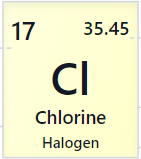(Prior Knowlege)
A cation gets its name because it has this charge.
What is a positive charge?
An anion gets it name because it has this charge.
What is a negative charge?
Ionic bonds are formed by this.
What is the electrostatic attraction between anions and cations? (Positive and Negative ions attracting eachother.)
A positively charged ion will be attracted to this type of ion.
These are the three sub-atomic particles which make up an atom.
What is insoluble?
A cation is created when an element ______ electrons
What is loses electrons?
An anion is created when an element ______ electrons
What is gains electrons?

This type of bond is formed when a nonmetal shares electrons with another nonmetal.
When formulating ionic compounds, the net charge of the ion should equal this value.
What is zero?
The electrons on the outermost shell (or the electrons that are involved in a chemical reaction.)
What are valence electrons?
These compounds only conduct electricity when dissolved in water.
What are ionic compounds?
A cation is created by these types of elements.
What are metals?
An anion is created by these types of elements
What are nonmetals?
This type of bond conducts electricity as a solid due to having "free electrons"
What are metallic bonds?
When pairing Lithium and Fluorine, you will have this chemical formula.
What is LiF?
The number of protons contained in Chlorine.
What are 17 protons?
These compounds do not dissolve in water.
Potassium forms this cation.
What is K+ (K1+)?
Chlorine forms this anion.
What is Cl- (or Cl1-)?
A large difference in electronegativity is responsible for this type of electron stealing bond.
What are ionic bonds?
When correctly pairing Sodium and Sulfur as an ionic compound, you will have this formula.
What is Na2S?

The number of valence electrons in Chlorine.
The NaCl (rock salt) particles from the lab dissolved more slowly than the others due to this factor.
What is a smaller surface area?
Beryllium forms this cation.
What is Be2+?
Oxygen forms this anion.
What is O2-?
As an aqueous solution (when dissolved in water)
The formula for a compound made of Aluminum and Oxygen.
What is Al2O3?
The periodic trend for atomic radius. (Both down and across.)
What is increasing down a group and decreasing across a period?
This sub-category of covalent bond is soluble in water.
What is a polar covalent bond (polar)?
Choose and discuss 1 observed phenomenon from a lab (either melting point or electrical conductivity) that supports a characteristic of ionic bonding that we discussed in this section.
May choose:
- Sticky tape showing oppositely charged electrostatic forces attract
- High melting point showing generally stronger bond strengths
- Conducting electricity when dissolved in water due to dissociated ions